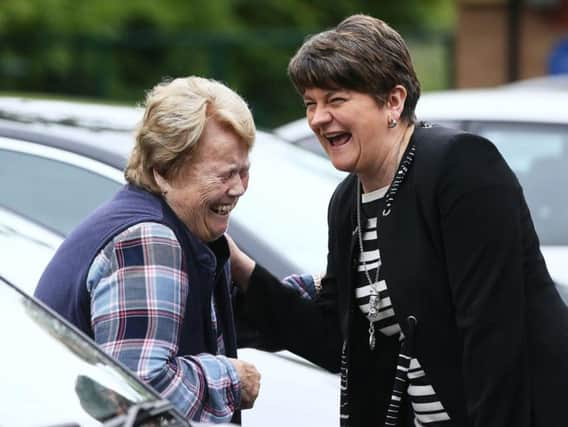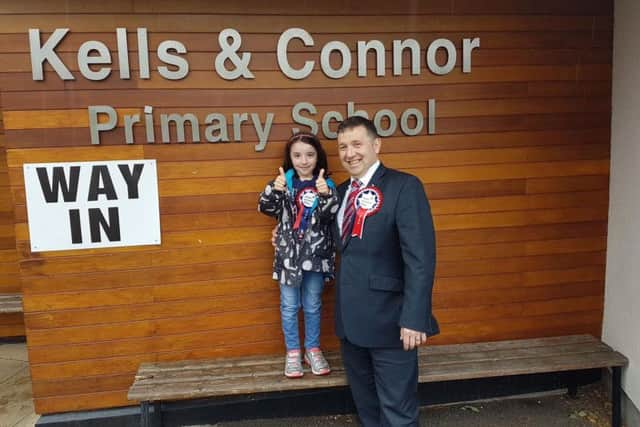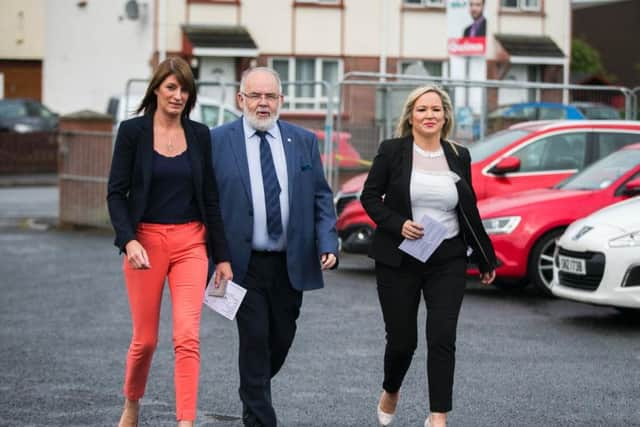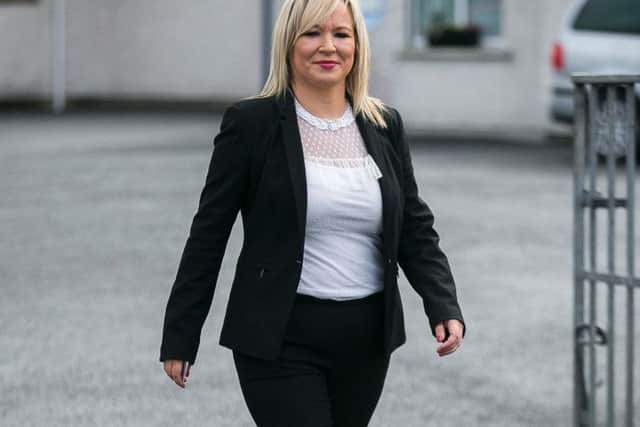Leaders cast ballots as NI voters head to polls for seventh time in three years


Democratic Unionist leader Arlene Foster voted near her home in Brookeborough, Co Fermanagh, while Sinn Fein's Stormont leader Michelle O'Neill marked her ballot paper close to her home village of Clonoe in Co Tyrone.
"Make sure you vote today to ensure NI has a strong team of MPs standing up for you," Mrs Foster tweeted.
"Wishing my DUP colleagues well."
Advertisement
Hide AdAdvertisement
Hide Ad

Outside the polling station, Mrs O'Neill said she was confident Sinn Fein could build on the momentum of its successful Assembly election in March.
"This is a chance for the electorate to come out and take a stand against Tory cuts and Brexit," she said.
"The public are angry. They want to come out and take a stand."
Ulster Unionist leader Robin Swann voted in Kells, Co Antrim, with SDLP leader Colum Eastwood and Alliance leader Naomi Long due to vote later on Thursday in Londonderry and Belfast respectively.
Advertisement
Hide AdAdvertisement
Hide Ad

The election is the seventh time voters have cast a ballot in Northern Ireland in three years.
Election fatigue has been one of the explanations offered for what was a low-key campaign in the region.
The poll comes just three months after the snap Assembly election triggered by the collapse of powersharing.
Since 2014, there has also been another general and Assembly election, a European election, a local government election and the EU referendum.
Advertisement
Hide AdAdvertisement
Hide Ad

For many local politicians, the snap general election was an unwanted distraction from efforts to restore the Stormont institutions.
Floundering negotiations to re-establish a coalition government in Belfast, which were put on ice during the campaign, will resume once the dust settles on Thursday's results.
The ongoing Assembly crisis blurred the lines between Stormont and Westminster issues on the campaign trail, with the blame game over the implosion of devolution spilling into the race for Westminster seats.
As in the rest of the UK, Brexit was a key campaign issue. While Sinn Fein, the SDLP and Alliance all called for some form of special designated EU status for Northern Ireland after the UK exits, the Democratic Unionists and Ulster Unionists steadfastly opposed anything that differentiated the region from Great Britain.
Advertisement
Hide AdAdvertisement
Hide Ad

Since last June's EU referendum, the Brexit debate in Northern Ireland has become increasingly intertwined with the constitutional question. Nationalists and republicans claim the UK decision to leave the EU, in the face of a 56% remain vote in Northern Ireland, highlights the case for a united Ireland. Unionists insist support for remaining in the EU cannot be interpreted as a swing in public opinion toward unification.
Those contrasting views were played out during the election, with the DUP urging voters to strengthen the Union and Sinn Fein encouraging supporters to add momentum to their campaign for a border poll.
A loyalist killing in Co Down at the end of May ensured the continued influence of paramilitaries in Northern Ireland became a key issue in the latter stages of the campaign.
The DUP was forced to distance itself from the endorsement of an umbrella group representing loyalist paramilitaries, while Sinn Fein defended the inclusion of convicted IRA bomber Sean Kelly on its canvas team in north Belfast.
Advertisement
Hide AdAdvertisement
Hide AdIn the 2015 general election, the DUP won eight seats, Sinn Fein four, the SDLP three, the UUP two, with one independent unionist returned.
A formal pact struck between the DUP and UUP two years ago was not replicated this time round, though both parties did step aside in certain battleground seats to maximise the pro-Union vote.


Meanwhile, a mooted "anti-Brexit" pact between pro-Remain parties such as the Greens, SDLP and Sinn Fein failed to materialise.
Despite the largely uneventful campaign, at least six of the 18 seats are set to be tightly fought.
Advertisement
Hide AdAdvertisement
Hide AdThree Belfast constituencies - South, East and North - along with South Down, South Antrim and Fermanagh and South Tyrone could all go down to the wire.
Counting will take place at seven centres across the region, with results expected during the early hours of Friday.
Also see: IN PICTURES: Westminster Election 2017